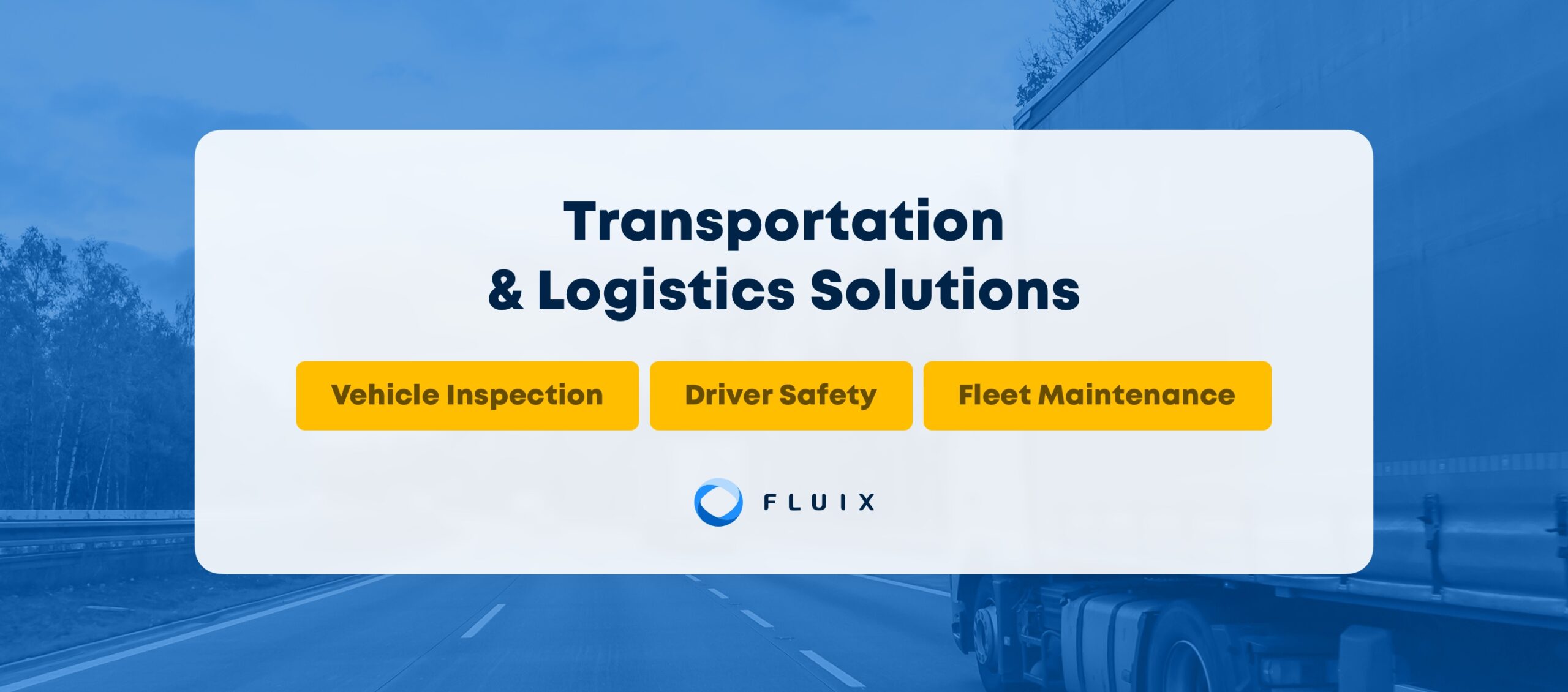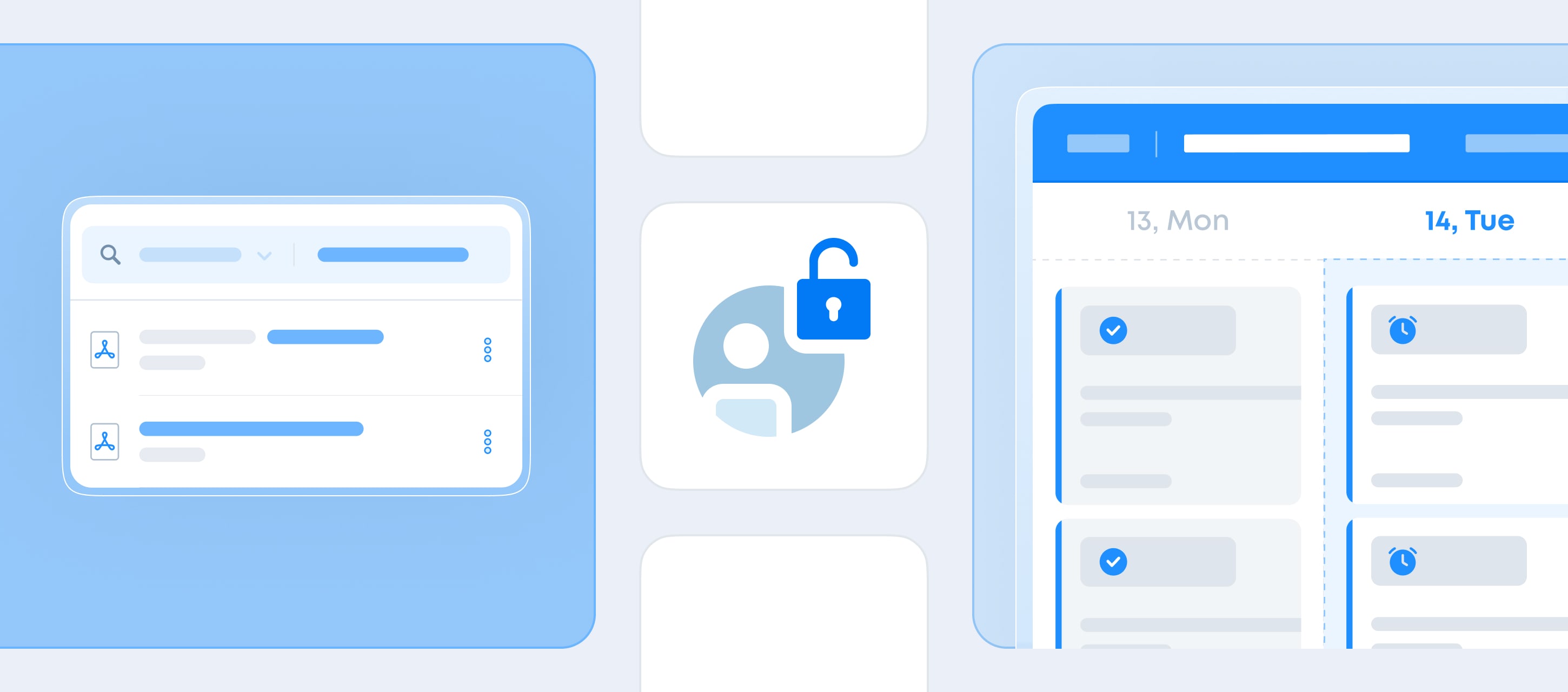Transportation and logistics are regulated by many policies, international and local. Trucking companies operating in different regions need to consider every regulation effective on the territory their vehicles cross.
Such a compliance-heavy approach aims to ensure roadways safety, prevent crashes, reduce injuries, and fatalities involving trucks, buses and cars. And, inevitably, it involves a lot of documentation. The bigger the fleet, the more drivers involved, the longer the route, the more forms and documents to manage. To name a few:
- Safety control
- Pre-operational inspections
- Maintenance
- Vehicle registration
- Alcohol testing
- Hours of operations
- Route assessment
- Skills training
- Insurance reporting and more.
To handle everything, businesses are turning to professional transportation management software that is designed to automate and simplify logistics processes and the related documentation. Fluix is this kind of a system.
Automating Key Processes with Checklists & Workflows
Fluix is a cloud-based web app that helps fleet operators stick to compliance responsibilities, and manage all the related documentation fast and with minimum admin work. It offers automation tools to streamline business processes and ensure your truck fleet is maintained properly, and is ready for operation.
- Mobile checklists and forms. You create and pre-fill custom forms in the central office and assign them to vehicle inspectors or drivers across the globe. They fill them in using a mobile device, laptop or smartphone, and add images, geolocation and timestamp for better evidence proof.
- Approvals. You build a workflow, monitor the status of each task, see upcoming due dates, sign in documents or resubmit forms for revision. Managers can see when asset maintenance is complete, what travel requests need approval, and what still needs to be done to onboard a new driver. All these tasks are automated, which eliminates unnecessary email threads, communication in messengers, and progress meetings.
- Reports. Automatically extract whatever info – tires, fuel, mileage, damage, hours, cargo – into a spreadsheet, and use it to identify risks and mitigate hazards. Get benchmarks of the performance of your drivers and fleet overall. Monitor operational safety and the impact of your safety program.
- Unanimity & standardization. You manage all tasks within one platform without migrating between disparate programs, spreadsheets, checklists, and reports. Standardized and consistent processes simplify admin for the existing staff, and give clear guidelines to new hires.
Let’s take a look at 5 practical use cases when fleet management software like Fluix can help you improve fleet management and logistics.
1. Fleet maintenance
Fleet maintenance is an ever-lasting process that aims to protect your vehicles and equipment from misuse, identify and replace dated spares before they compromise other parts or cause a breakdown.
To get a clear picture, make sure your maintenance checklists have as full data and include the vehicle type, hours in operation, maintenance and repair history, current mileage, fluid levels, history of oil changes, etc.
Once the data is collected and analyzed, schedule upcoming vehicle service needed to keep the vehicle going. In Fluix, you can create notifications to your maintenance team so that they know when the vehicle is ready for service.
Maintenance checklists can serve as a guideline base for drivers. By analyzing what parts are more exposed to breakdown, you can instruct your driving team on how to maintain uptime and identify issues as they arise.
2. Vehicle inspection
Each type of vehicle used in commercial operations requires a custom inspection that can involve drivers, technicians, managers, and maintenance supervisors. Regardless of the type (pre-trip, daily, post-operational, driver) vehicle inspections presuppose visual checks and checklist completion.
All the results must be recorded, transferred to the central office but at the same time be available within a truck so that a driver can show it to the inspector if requested. Digital checklists stored in a cloud makes the whole procedure easier and less time-consuming. Moreover, they allow them to capture images of vehicle issues and add them to the checklist as evidence.
3. Driver safety
The driver’s behavior during a dangerous situation is often the reason behind truck crashes, resulting in serious injuries and damage. The vehicle’s condition, roadway quality, and heavy weather are also contributing factors but the human element is decisive. Fatigue, overworked hours or simply poor training on what to do if a crash happens are the causes of inattention.
To prevent all, fleet operators need to implement activities and to stop fatigue before it even occurs. Implement driver timesheets where people will put down all working hours and breaks so that a manager can tell whether they’ve been on the road longer than recommended and permitted. Make sure your drivers follow the rules for commercial drivers established by the Federal Motor Carrier Safety Administration (FMCSA) that regulate the hours a driver may work per day and week.
Safety talks are another way to help drivers work in a safe and productive manner. Dispatchers can communicate important information to drivers and monitor whether they perceive it the right way by completing the corresponding checklists. Using fleet management software like Fluix allows you to update job notes or load materials and immediately notify drivers on it.
4. Compliance
Commercial driving belongs to hazardous activities, and the yearly number of crash fatalities is still high, regardless of the improved road conditions and vehicle safety systems. That’s why the industry is so highly-regulated, with Federal Motor Carrier Safety Administration, Freight Transport Association (FTA), Fleet Operators Recognition Scheme (FORS) and others requiring regular checks to ensure the safe operation of vehicles and drivers.
To meet compliance, conducting checks and presenting them to the auditors quickly and easily should become a standardized operating process. This is where digital checklists and form templates step in. You can fill them in faster, distribute remotely, store in a cloud and have access to it at any time.
5. Sustainability
Green logistics is a recent trend in fleet management that aims to make commercial driving operations more sustainable. This means making changes to energy use, fuel consumption, product sourcing, tool efficiency, and of course gas emissions.
Digital forms and automated workflows help with some of these goals, replacing tons of paper documents, reducing commute, optimizing team communication. The records are stored in a cloud and so they are impossible to lose and don’t need constant paper update or even replacement.
Delivering drivers most efficient routes, recent updates, and in-time maintenance schedule reduces wear of fleet assets. Fleet managers can monitor diagnostics in a single system, schedule preventative services to prolong the vehicle lifespan.






